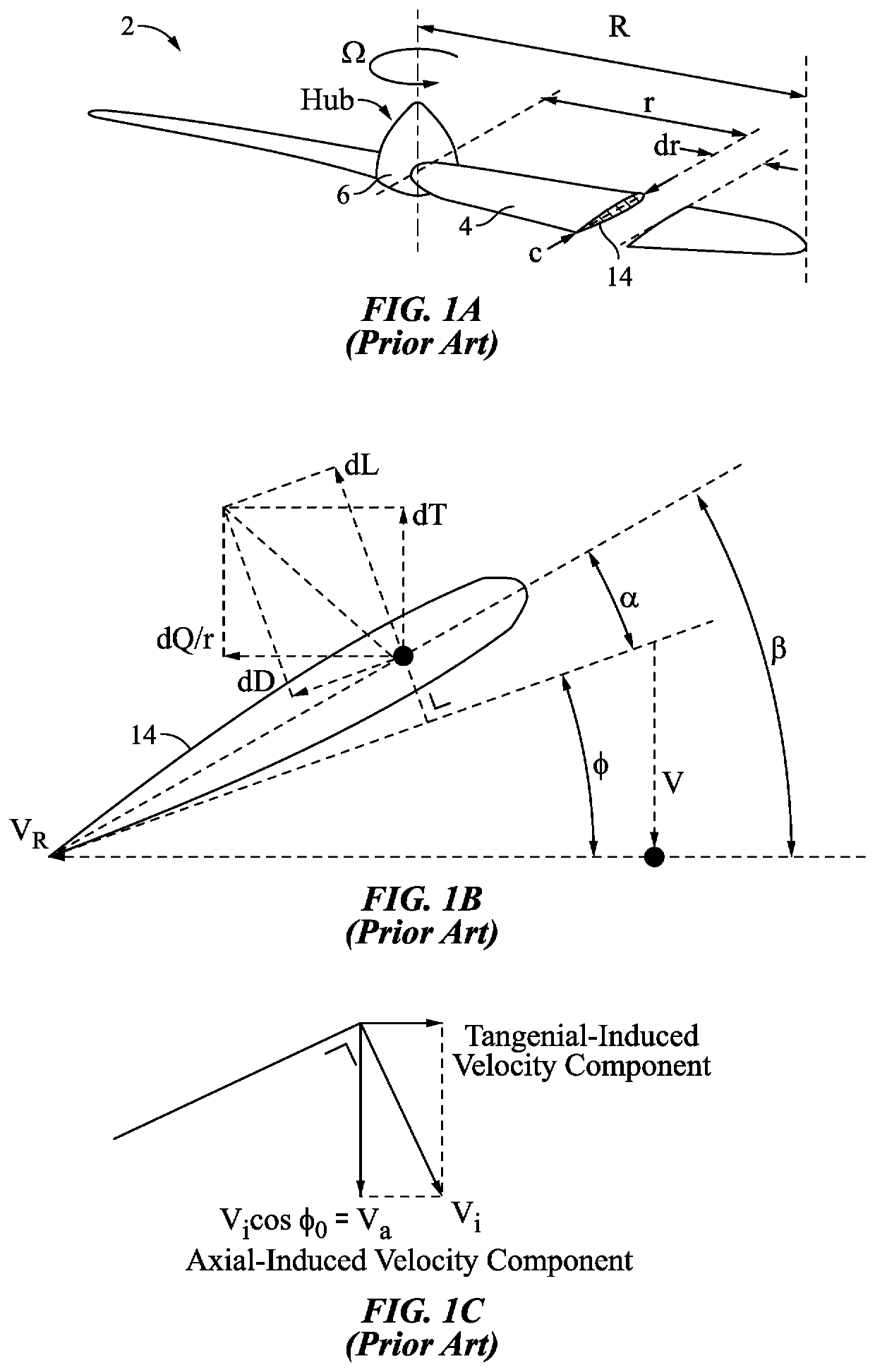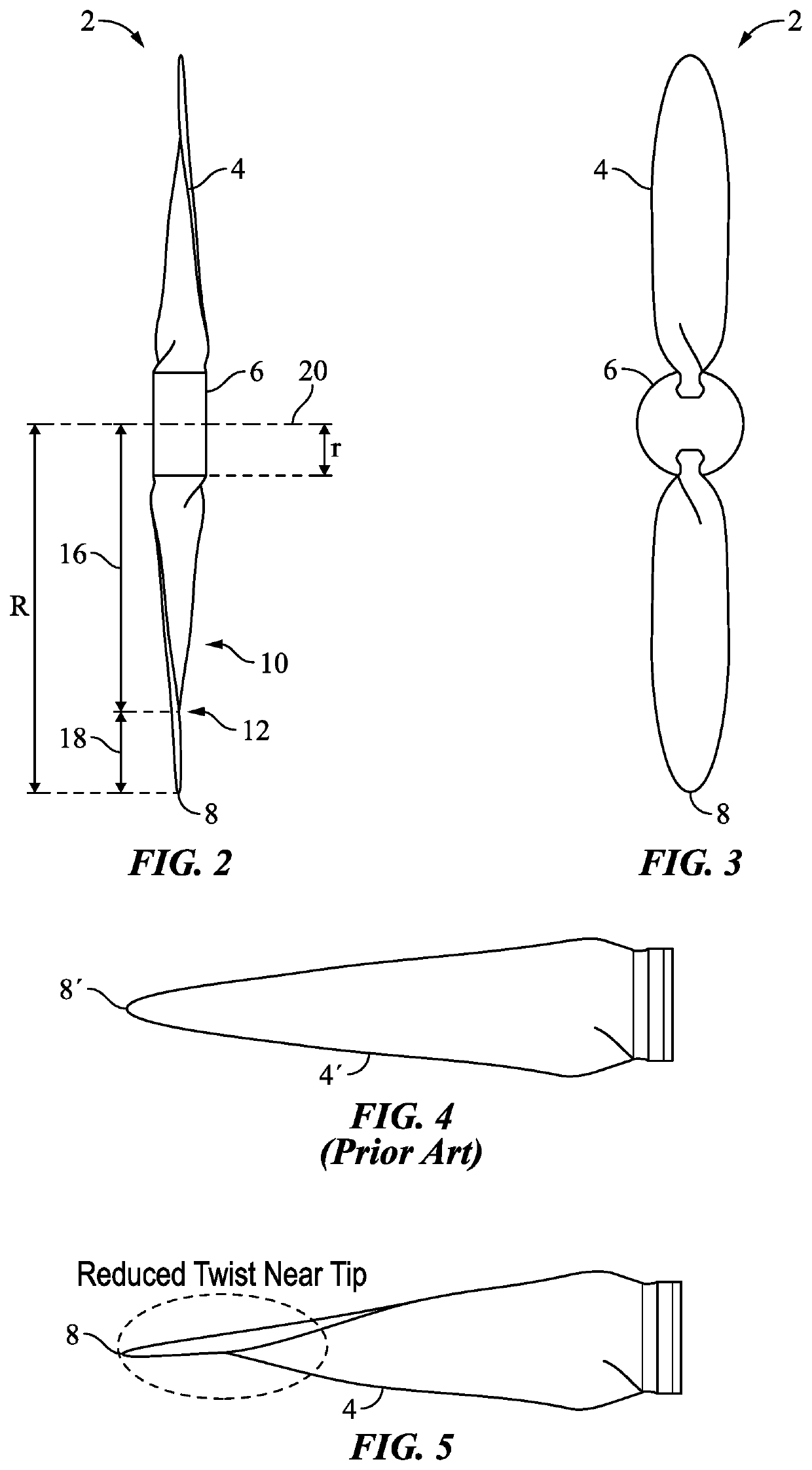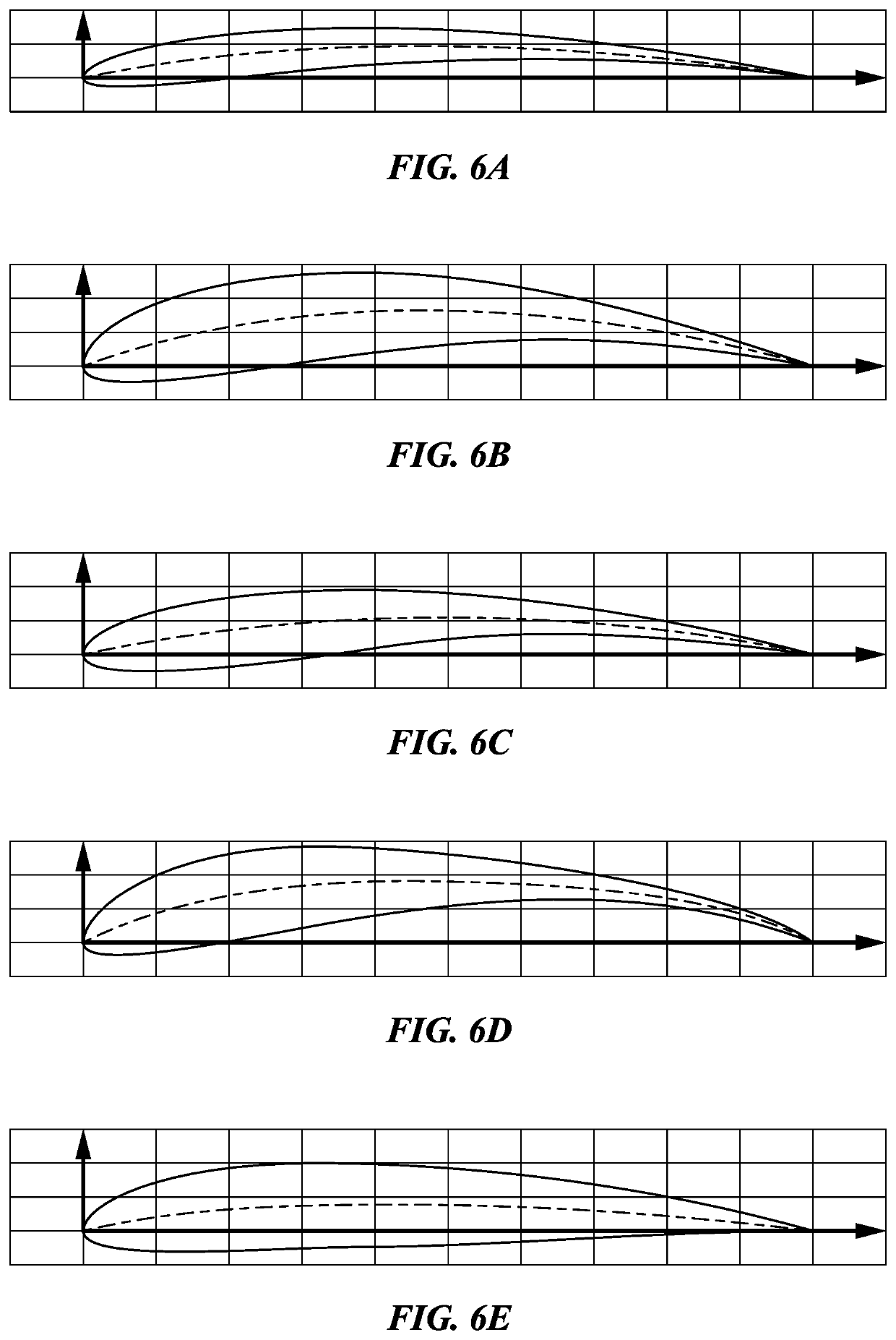Propeller with Unloaded Tip Zone and Method
a technology of unloaded tip and propeller, which is applied in the direction of propellers, rotorcraft, vehicles, etc., can solve the problems of reducing the strength lowering the induced drag and torque required to spin the propeller, and avoiding creating positive lift. , the effect of reducing the flow of the tip vortex
- Summary
- Abstract
- Description
- Claims
- Application Information
AI Technical Summary
Benefits of technology
Problems solved by technology
Method used
Image
Examples
experiment 1
[0088]This experiment examined where to begin the transition to zero lift at the propeller tip and also to explore where zero lift should occur on the propeller blade. This experiment also sought to determine if there is an optimum combination of the break points that would reduce the power required and at the same time reduce the noise generated as a result of unloading the propeller tip.
[0089]FIG. 9A is an illustrative graph showing the test matrix of double break configurations tested. For this study the GM-15 airfoil was used with the same design point previously described and using an exemplary 3.5 degree AOA at the hub. The graph shows that zero lift occurred at an AOA of −2.72 degrees. The break location for the hub ranged from 0.90 r / R to 0.40 r / R.
[0090]FIG. 9B is an illustrative graph showing the cl for a sampling of the double break designs from FIG. 9A. The results of double break configurations tests display the data from 80% hub break to 40% hub break using a constant t...
experiment 2
[0106]This experiment focused on the angle of attack (AOA) effects on mechanical power required to attain desired design performance, and noise level at thrust power levels and at RPM. The experiment compared the various embodiments of the double-break design of the invention. The design point for this experiment, as in others discussed herein, is 2.5 lbf of thrust, a freestream velocity of 44 ft / s, and an altitude of 7,000 ft as well as a constant chord propeller configuration of 1.87 inches, a propeller diameter of 13.3 inches, and an oval shaped tip. All airfoil aerodynamic data are reported for a Reynolds number of 100,000 as found in XFOIL.
[0107]The double-break design for minimum induced drag results in a propeller that is both quieter and more aerodynamically efficient than the stock commercial propeller and the baseline BEMT. In an advantageous example, the double-break propeller design incorporated a constant angle of attack (AOA) from the hub to an r / R of 50% where the sec...
experiment 3
[0117]Unloading the selected tip zone reduces the torque required to spin the propeller which leads to a reduction in mechanical power consumption. Comparisons of the mechanical power can be made to recommend the optimum propeller chord and RPM for design.
[0118]FIG. 28A is an illustrative graph showing mechanical power as a function of RPMs for a given propeller design with different chord lengths for minimum power loss, according to the teachings herein. FIG. 28B is an illustrative graph showing efficiency as a function of RPMs for a given propeller design with different chord lengths for minimum power loss, according to the teachings herein. In FIGS. 28A and 28B, RPM and chord were allowed to change for a given propeller design with the desire to find the optimal chord length to minimize thrust power loss and maximize efficiency or some combination thereof. In the nonlimiting example, a one inch chord for the particular blade design would appear to be good selection.
PUM
 Login to View More
Login to View More Abstract
Description
Claims
Application Information
 Login to View More
Login to View More - R&D
- Intellectual Property
- Life Sciences
- Materials
- Tech Scout
- Unparalleled Data Quality
- Higher Quality Content
- 60% Fewer Hallucinations
Browse by: Latest US Patents, China's latest patents, Technical Efficacy Thesaurus, Application Domain, Technology Topic, Popular Technical Reports.
© 2025 PatSnap. All rights reserved.Legal|Privacy policy|Modern Slavery Act Transparency Statement|Sitemap|About US| Contact US: help@patsnap.com



